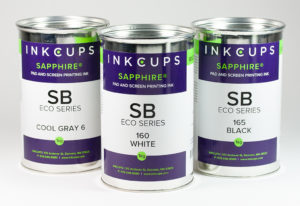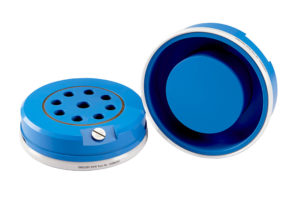- Equipment
- Inks & Supplies
- Services
- Applications
- Tagless
- Resources
- About Us
- Contact Us

With the arrival of Earth Day, you may have given back by picking up garbage in your neighborhood or collecting cans from your local beach shore. Both are excellent ways to maintain and clean our beautiful planet. But you might be looking for additional steps to sustainability that can benefit Earth and all of those upon it.
USA Today reported that Earth Day, which takes place every 22nd of April is the most widely observed (secular) holiday around the world. Last year’s activities reported an awe-inspiriting 1 billion participants. Earth Day began 52 years ago on April 22, 1970 with each year highlighting a theme, this year being “Invest in Our Planet”. So that poses the question- how can we invest in our planet every day?
As the climate crisis becomes more evident, there is a greater urgency to find sustainable options throughout our everyday lives. Today we will explore numerous branches of sustainability within the printing industry.
The method of printing can be an additional step toward sustainability. For instance, there are a couple options for printing when it comes to apparel labeling. The three most popular methods of apparel labeling are screen printing, pad printing, or heat transfers. A tagless label forgoes a fabric label sewn into a garment and directly prints the care label information onto the garment. Our site contains a lot of information on the three methods, specifically a fantastic blog post that goes into great depth, Tagless Manufacturers Cost Reduction. Within the pad printing process stems two important sustainable components, sustainable pad printing ink and reusable ink cups as well as external decisions, like choosing what materials to print on.
 Sustainable Ink
Sustainable InkThe SB Eco Series for Apparel Tags is the most sustainable garment ink available to date. Designed with the environment in mind, SB Eco ink does not contain Naphtha Solvent, Cyclohexanone, nor Aromatic Hydrocarbons. Rich pigments of ink are organic and achieved without Azo dyes and are free of heavy metals.
 Reusable Ink Cups
Reusable Ink CupsAs previously touched upon a great step toward sustainability is reducing waste in every area we can. Our ink cups no do use plastic inserts that need to be discarded after every use. How do we achieve this? Our patented VersaCup® is lined with a proprietary ink resistant coating to create an easy cleanup after the ink dries. Not only does this eliminate the need for plastic inserts, it also eliminates using solvents to clean the cup.
Tagless printing eliminates the need for hangtags, and therefore eliminating extra paper waste. This eco-friendly label printing solution is designed to save energy and cut down on utility costs. Energy consumption is only 0.0096 KW per pad printing machine and 40% fewer printing machines are needed.

Steps can be taken toward sustainability whether you find yourself pad printing or digitally printing! For instance, 60 million plastic water bottles are thrown away each day in the United States alone, amounting to 35 billion water bottles in a year. This proposes the opportunity to offer customers eco-friendly water bottles, or other reusable drinkware.
The Helix® and Double Helix® are a fantastic fit for a digital printing machine when it comes to printing on a variety of water bottles, sports bottles, stainless steel tumblers, and more.
The Revolution® is the perfect high-speed cylindrical machine for printing on stadium cups, allowing businesses to elevate marketing materials by offering customized event or promotional cups in lieu of traditional plastic disposable cups. The Revolution delivers a turnkey solution as pre-treatment, a necessary step for printing on stadium cups, is included within the unit to achieve superior adhesion. Stadium cups printed with the Revolution® are particularly attractive due to its printing ability to print the entire body and lip of the cup. Additionally the Revolution® features automatic load via vacuum mandrel and unload by an exit conveyor, allowing an operator the freedom to see to other more skilled tasks at hand.
Direct-to-object printing is another sustainable digital practice as it eliminates additional consumables and waste. For instance, digital cylindrical printing prints directly onto the vessel, whereas other methods require paper or plastic sleeves, shrink labels, or paper waste from dye sublimation.
For a complete look at the pledge to sustainability that Inkcups has taken, visit our dedicated page here.
Back to Blog Home
Add Your Comment